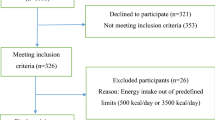Abstract
Recently, several studies reported elevated cholesterol levels in panic disorder, agoraphobia, and general anxiety disorder, but the clinical relevance is still unsettled. All studies so far have disregarded the possible influence of dietary and physical exercise factors. In this study, 30 patients with different anxiety disorders and 30 normal controls were compared for total cholesterol, low-density lipoprotein (LDL), and cholesterol/high-density lipoprotein (HDL) ratio. Dietary and physical exercise habits were measured by self-rating questionnaires. Patients with anxiety disorders had significantly elevated total cholesterol, LDL, and cholesterol/HDL ratios. Patients showed borderline-high or high cholesterol levels almost 3 times as often as control participants. Anxiety-specific avoidance of physical exercise and special dietary habits of anxiety patients had a significant but minor impact on differences in cholesterol between both groups. Our data support the assumption that serum cholesterol elevations in anxiety disorder patients are within a clinically relevant range.
Similar content being viewed by others
References
American Psychiatric Association. (1994). Diagnostic and statistical manual of mental disorders (4th ed). Washington, DC: Author.
Bajwa, W. K., Asnis, G. M., Sanderson, W. C, Irfan, A., & van Praag, H. M. (1992). High cholesterol levels in patients with panic disorder. American Journal of Psychiatry, 149, 376–378.
Brindley, D. N., McCann, B. S., Niaura, R., Stoney, C. M., & Suarez, E. C. (1993). Stress and lipoprotein metabolism: Modulators and mechanisms. Metabolism, 42, 3–15.
Charney, D. S., & Redmond, D. E. (1983). Neurobiologic mechanisms in human anxiety: Evidence supporting central noradrenergic hyperactivity. Neuropharmacology, 22, 1531–1536.
Coryell, W. (1988). Panic disorder and mortality. Psychiatric Clinics of North America, 11, 433–440.
Coryell, W., Noyes, R., & Clancy, J. (1982). Excess mortality in panic disorder: A comparison with unipolar depression. Archives of General Psychiatry, 39, 701–703.
Coryell, W., Noyes, R., & House, J. D. (1986). Mortality among outpatients with anxiety disorders. American Journal of Psychiatry, 143, 508–510.
Dimsdale, J. E., & Herd, J. A. (1982). Variability of plasma lipids in response to emotional arousal. Psychosomatic Medicine, 44, 413–429.
The Expert Panel. (1988). Report of the national education program: Expert panel on detection, evaluation, and treatment of high blood cholesterol in adults. Archives of Internal Medicine, 148, 36–69.
Freedman, D. S., Byers, T., Barrett, D. H., Stroup, N. E., Eaker, E., & Monroe-Blum, H. (1995). Plasma lipid levels and psychological characteristics in men. American Journal of Epidemiology, 141, 507–517.
Friedewald, W. T., Levy, R. I., & Fredickson, D. S. (1972). Estimation of concentration of low-density lipoprotein cholesterol in plasma, without use of preparative ultracentrifuge. Clinical Chemistry, 18, 499–502.
Haines, A. P., lmeson, J. D., & Meade, T. W. (1987). Phobic anxiety and ischaemic heart disease. British Medical Journal, 295, 297–299.
Hayward, C, Taylor, C. B., Roth, W. T., King, R., & Agras, W. S. (1989). Plasma lipid levels in patients with panic disorder or agoraphobia. American Journal of Psychiatry, 146, 917–919.
Hopkins, P. N. (1992). Effects of dietary cholesterol on serum cholesterol: A meta-analysis and review. American Journal of Clinical Nutrition, 55, 1060–1070.
Kristal, A. R., Shattuck, A. L., Henry, H. J., & Fowler, A. S. (1990). Rapid assessment of dietary intake of fat, fiber, and saturated fat: Validity of an instrument for community intervention research and nutritional surveillance. American Journal of Health Promotion, 4, 288–295.
Kuczmierczyk, A. R., Barbee, J. G., Bologna, N. A., & Townsend, M. H. (1996). Serum cholesterol levels in patients with generalized anxiety disorder (GAD) and with GAD and comorbid major depression. Canadian Journal of Psychiatry, 41, 465–468.
Martin, M. J., Hulley, S. B., Browner, W. S., Kuller, L. H., & Wentworth, D. (1986). Serum cholesterol, blood pressure and mortality: Implications from a cohort of 361,662 men. Lancet, 2, 933–936.
Martin, R. L., Cloninger, C. R., Guze, S. B., & Clayton, P. J. (1985). Mortality in a follow-up of 500 psychiatric outpatients. Archives of General Psychiatry, 42, 47–71.
Nesse, R. M., Cameron, O. G., Curtis, G. C., McCann, D. S., & Huber-Smith, M. J. (1984). Adrenergic function in patients with panic anxiety. Archives of General Psychiatry, 41, 771–776.
Niaura, R., Stoney, C. M., & Herbert, P. N. (1992). Lipids in psychological research: The last decade. Biological Psychology, 34, 1–43.
O’Donnell, L., Owens, D., McGee, C., Devery, R., Hession, P., Collins, P., Johnson, A., & Tomkin, G. (1988). Effects of catecholamines on serum lipoproteins of normally fed and cholesterol-fed rabbits. Metabolism, 37, 910–915.
Reifman, A., & Windle, M. (1993). High cholesterol levels in patients with panic disorder. American Journal of Psychiatry, 150, 527.
Spielberger, C. D., Gorusch, R. L., & Luschene, R. E. (1970). State-Trait Anxiety Inventory. Palo Alto, CA: Consulting Psychologists Press.
Tancer, M. E., Stein, M. B., Moul, D. E., & Uhde, T. U. (1990). Normal serum cholesterol in panic disorder. Biological Psychiatry, 27, 99–101.
Tran, Z. V., & Weltman, A. (1985). Differential effects of exercise on serum lipid and lipoprotein levels seen with changes in body weight: A meta-analysis. Journal of the American Medical Association, 254, 919–924.
Villacres, E. C, Hollifield, M., & Kanton, W. J. (1987). Sympathic nervous system activity in panic disorder. Psychiatry Research, 21, 313–321.
Weissman, M. M., Markowitz, J. S., Ouelette, R., Greenwald, S., & Kahn, J. P. (1990). Panic disorder and cardiovascular/cerebrovascular problems: Results from a community survey. American Journal of Psychiatry, 147, 1504–1508.
Yeragani, V. K., Pohl, R., Balon, R., Ramesh, C., Glitz, D., & Sherwood, P. (1990). Risk factors for cardiovascular illness in panic disorder patients. Neuropsychobiology, 23, 134–139.
Author information
Authors and Affiliations
Rights and permissions
About this article
Cite this article
Peter, H., Goebel, P., Müller, S. et al. Clinically relevant cholesterol elevation in anxiety disorders: A comparison with normal controls. Int. J. Behav. Med. 6, 30–39 (1999). https://doi.org/10.1207/s15327558ijbm0601_3
Issue Date:
DOI: https://doi.org/10.1207/s15327558ijbm0601_3



